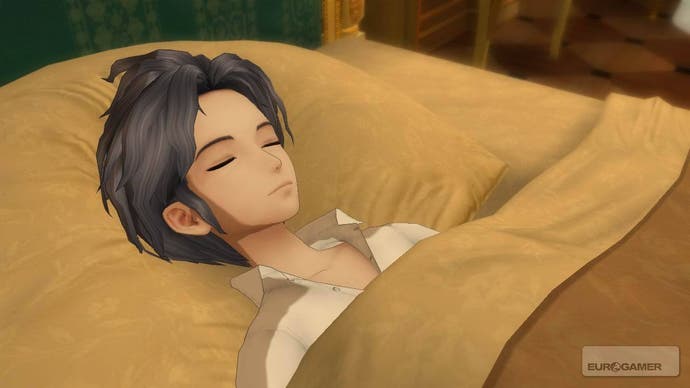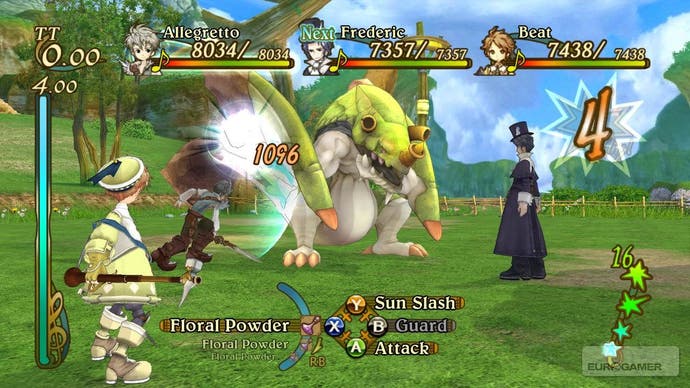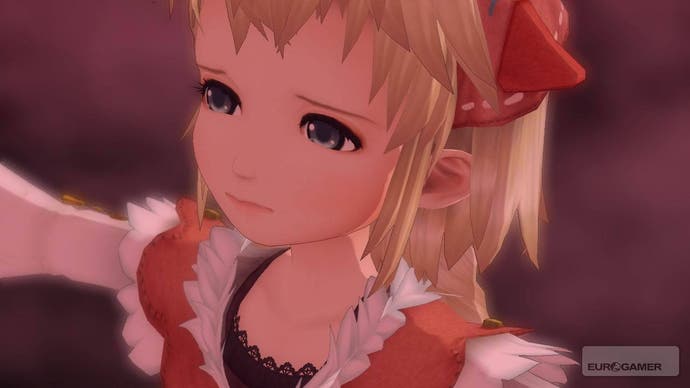Eternal Sonata
A demonstration of beauty.
Hype is a fickle and unkind mistress. The games it chooses to touch seem almost chosen at random (or at least, at the whim of a marketing division, which often seems to be just about the same thing), with many wonderful games completely passed over by its gentle caress.
Those games which it does touch may enjoy a moment of ecstasy as their names are splashed around the media with wild abandon and flowing superlatives - but it often all comes crashing down, as few games can ever live up to their headline billing.
Hype is a cruel thing. Witness the current strange situation regarding the burgeoning Japanese RPG market on the Xbox 360 as a perfect example. The two major genre titles appearing this year are both victims of hype, in very different ways.
The vastly hyped Blue Dragon is almost certain to be a vast disappointment to many people, as it is incredibly traditional (almost to the point of being utterly backwards in places) and basic in its composition - but yet has been hyped to the gills as a mass-market game.

Eternal Sonata, meanwhile... Well, if you've heard of it, you're probably one of the few, as hype has passed it over almost entirely. Which is a shame, because on the strength of the demo released in North America a few weeks ago, Eternal Sonata may well be just the thing to turn Microsoft's fortunes around on the JRPG front.
Fantasia on Polish Airs
Eternal Sonata - called Trusty Bell in Japan, for reasons best known to Namco Bandai's Japanese development team - takes a rather unusual approach to RPG storytelling. The game is ostensibly the tale of the last few hours in the life of celebrated composer Frederic Chopin. The Polish composer died in 1849 from tuberculosis, at the age of 39; Eternal Sonata's key conceit is that in his final hours, as he slipped into a coma, he entered a dream world of his own creation.
It's within this world that the entire game takes place. Eternal Sonata's universe is appropriately dream-like as a result, sporting an attractively flat-shaded look filled with soft focus, pastel colours and delicately glowing light. The short demo US audiences have seen (which is almost identical to the demo we played at the Tokyo Games Show last September, albeit with US voice actors - we'll get on to that in a minute) is set in two key locations.

There's an idyllic pastoral village, complete with sparkling streams, well-tended gardens and a field full of colourful flowers, and then there's a haunted-looking forest behind the village - no less beautiful, but filled with strangely glowing flora, deep shadows and rather unfriendly fauna.
The character designs which complement this world are solidly within the traditional Japanese design aesthetic, with a distinctly manga feel which is reminiscent of Square Enix' Grandia series or Namco Bandai's own Tales series. However, the graphical grunt of the Xbox 360 (and the higher resolution HD output) gives the game's characters a visual edge; cel-shading may result in a simpler designs, but getting the shadows and highlights perfectly right on characters is something that hasn't really been done until now.
Where the game really catches our interest isn't in its visuals, however, glorious thought they may be. It's Eternal Sonata's combat system which really sets it apart from its peers in the field - being possibly the most interesting marriage of turn-based and real-time battle mechanics we've seen thus far.
In the demo, you play with three characters - sword-wielding teen RPG stereotype Allegretto, bow-legged mawkish pre-pubescent gunslinger (no, really) Beat, and constantly apologising shrinking violet Polka, who fights using a lovely umbrella. As each character's turn comes around, you control each one in turn - running around the battlefield, hitting enemies and using items.

The catch is that each turn lasts only for a limited amount of time, measured by a bar which counts down rather rapidly on the left hand side of the screen. Thus, you need to balance up what you're going to do very carefully; attacking a distant enemy will involve running to the other side of the battlefield, which will waste precious seconds, while using a potion to restore health could take almost half of your turn.
Each character has only two main action buttons - A for normal attacks, which are basic physical or ranged attacks and can generally be chained together pretty rapidly, and Y for special attacks. As you use normal attacks, a bar on the right hand charges up gradually with each blow; when a character then uses a special attack, the power of that attack is determined by how charged up the right-hand "special" bar is.


